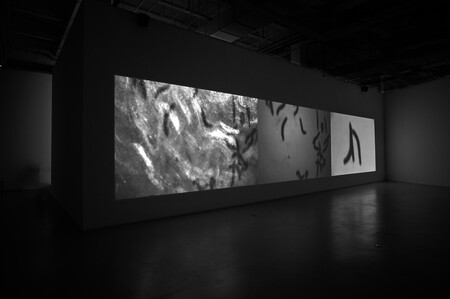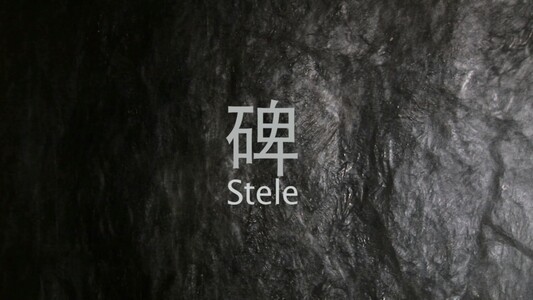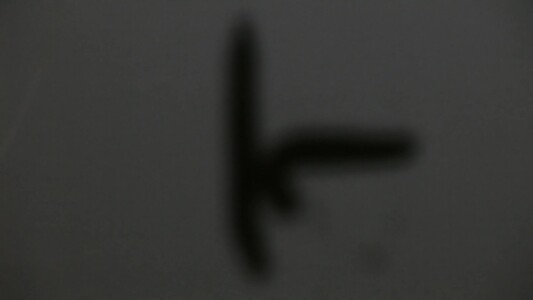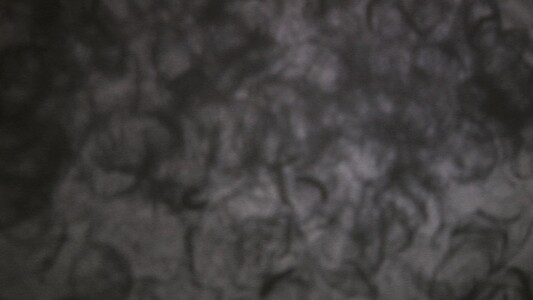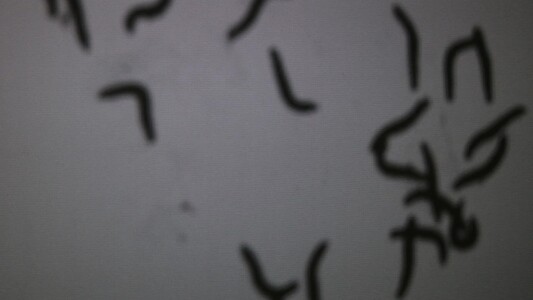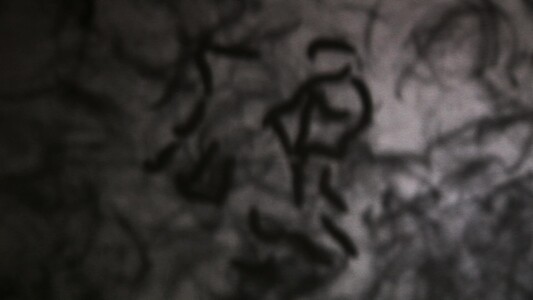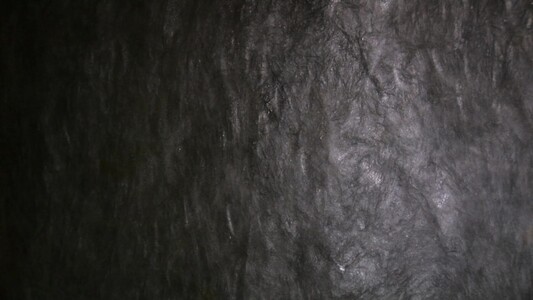Looking at the shadow of silkworm, I can read history.
History is just like the silk fibre running endlessly.
History is also like a wisp of cloud scudding into oblivion.
Slowly the cluster of caterpillars crawl and wriggle, casting a shadow on screen and forming an amazing piece of calligraphy - in silkworm script, an archaic style in China often found as memorial inscription in high cliff or tattoo on skin. Consisting of shadows of the movement of silkworm, the calligraphy is highly expressive: some raise heads eagerly, some squirm painfully, and others drop down accidentally. They become fable of history, the history of the hero, the great, the pain and the turmoil.
As the silk piece grows thicker and thicker, light is gradually blocked so the characters of silkworm script disappear, leaving only a stele deprived of any inscription and the sound of humming. Words are not fully uttered, and history not fully unfolded either. Witness of existence of those who exist, the wordless stele is also echoed by the plaint for the departed and implies the understanding of the passing of time. All things return to void, return to origin.
Chinese people have been upholding the tradition of history, literature, music and poem from ancient times. Learning from the ancients I sing out the history (like Cao Cao in View of the Blue Sea, Liu Bang in Song of the Great Wind, and Chen Zi’ang in On a Gate-tower at Yuzhou). The sound in experiment is extraordinarily deep and spacious with profound meanings.
This work started in the beginning of 2008. In 2009 I tried another round and finished the editing for the first time. The work was not completed until 2014. The humming sound was my own voice.
Preview Online
Detail pictures:






